Melanie Sanford, University of Michigan
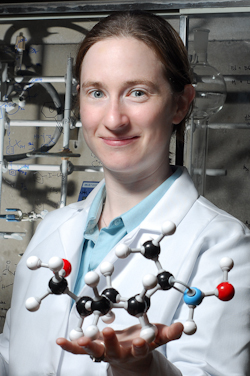
Melanie Sanford grew up in Providence, RI. She received her undergraduate degree in chemistry from Yale University in 1996 where she worked with Professor Bob Crabtree studying C-F bond functionalization. She then moved to Caltech where she worked with Professor Bob Grubbs investigating the mechanism of ruthenium-catalyzed olefin metathesis reactions. After receiving her PhD in 2001, she worked with Professor Jay Groves at Princeton University as an NIH post-doctoral fellow studying metalloporphyrin-catalyzed functionalization of olefins. Melanie has been a professor at the University of Michigan since the summer of 2003. She is an associate editor for the Journal of the American Chemical Society, a MacArthur and AAAS Fellow, and she was awarded the John Dewey Award for Undergraduate Education.
Nate Szymczak, University of Michigan
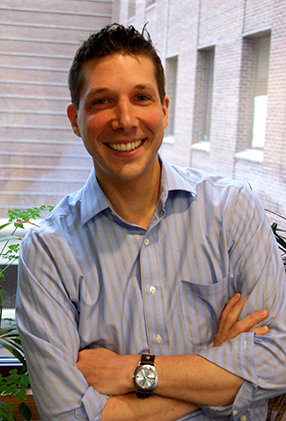
Nate Szymczak was born in Wollongong, Australia. In 2002 he received his Bachelor of Science degree in chemistry (with a specialization in environmental chemistry) from the University of Illinois at Champaign-Urbana, where he was fortunate to work on several undergraduate research projects, each focused on a unique approach to environmentally-motivated chemistry. His research experience culminated in the laboratories of Professor Thomas Rauchfuss where he worked on synthetic bioinorganic chemistry. In the fall of 2002, Nate began doctoral studies under the direction of David Tyler at the University of Oregon. His graduate research focused on water-soluble transition metal dihydrogen and dinitrogen complexes as well as hydrogen-bonding interactions of a coordinated H2 ligand. He was awarded a Ph.D. in 2007 and pursued postdoctoral research with Professor Jonas Peters at the Massachusetts Institute of Technology and the California Institute of Technology. In 2010, Nate joined the faculty at the University of Michigan where his research program focuses primarily on synthetic transition-metal based inorganic chemistry targeted toward the development of new catalytic transformations for energy recycling and delivery with minimal energy input.
Elon Ison, North Carolina State University

Elon Ison is an Associate Professor of Chemistry at North Carolina State University. Professor Ison graduated with a B.S. in Chemistry from Kean University in 1999 where he performed undergraduate research in organic synthesis and computational chemistry under the direction of Dale Vitale. He earned his Ph.D. in organometallic chemistry from the University of Florida working with James Boncella. Professor Ison did his postdoctoral work with Mahdi Abu-Omar at Purdue University. Professor Ison joined that faculty at NC State in 2006 and received an NSF CAREER Award in 2010 for the design of green catalysts for chemical oxidations. He is a member of the Center for Enabling New Technologies through Catalysis (CENTC). His research group specializes in homogeneous catalysis and studies problems ranging from the development of useful synthetic methodologies for organic chemistry to understanding the principles that underlie catalytic reactions.
Oleg Ozerov, Texas A&M University
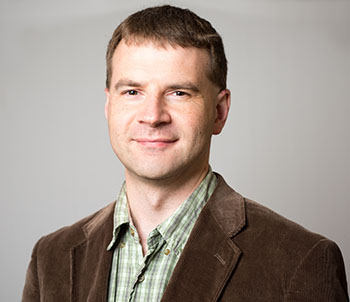
Oleg started his studies in the Higher Chemical College of the Russian Academy of Sciences in 1992. During his first year in college, Oleg joined the laboratory of Professor Nikolai Ustynyuk and gained experience working with vinylidene complexes of manganese. In 1995, Oleg spent a summer doing research on organosilicon dendrimers at the University of Kentucky in the laboratory of Professor Folami Ladipo. Encouraged by the positive experience at Kentucky, Oleg returned in the Fall of 1996 to start his Ph.D. studies. He obtained his chemistry diploma from the Higher Chemical College in 1998 and his Ph.D. from the University of Kentucky in the Spring of 2000. Oleg then moved to Indiana University to join the group of Professor Ken Caulton as a postdoctoral associate working on pincer compounds of ruthenium and rhenium. In the spring of 2002, Oleg joined the Department of Chemistry at Brandeis University as an assistant professor of chemistry. He was promoted to the rank of associate professor with tenure in 2006. In January of 2009, Oleg relocated to Texas A&M University where he is now Professor of Chemistry and Coordinator of Graduate Recruiting. His research interests are in synthetic organometallic chemistry and its applications in catalysis and energy-related problems. Oleg has received numerous awards including an Alfred P. Sloan Research Fellowship, a Camille Dreyfus Teacher Scholar Award and the ACS Award in Pure Chemistry.
Sheila Smith, University of Michigan, Dearborn
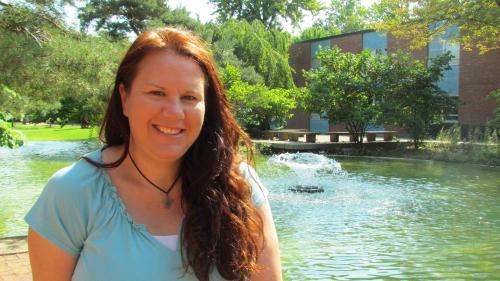
Sheila joined the Leadership Council of IONiC in 2010. Her educational journey has taken her from NC State (BS) to UNC (PhD) to Amherst College (post-doc) and Michigan State (post-doc) before landing at the University of Michigan- Dearborn where she is currently an associate professor. Her research focuses on the characterization of metal interactions (specifically iron and copper) with proteins and has included over 30 undergraduate researchers/ co-authors. In addition to rotations through all of the 300- and 400- level required inorganic courses in the ACS approved curriculum at UM- Dearborn, Sheila is also a lead instructor in second semester General Chemistry and teaches Biochemistry including a cross-listed (BCHM/CHEM) course in the chemistry of metals in biological systems. In her spare time (whatever that is), she camps, hikes, bikes, skis, skates and kayaks with her 9 y.o. American Foxhound, Bean.
Joanne Stewart, Hope College
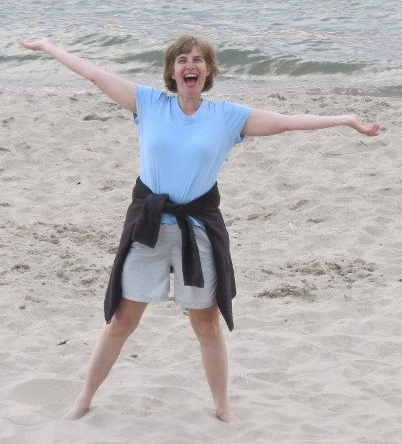
Joanne started her adventures in chemical education as part of the NSF-sponsored ChemLinks consortium in the mid 90’s. She is a faculty member in the chemistry department at Hope College where she has worked with 70 undergraduate research students. She is very interested in interdisciplinary teaching and learning and especially in how students integrate their knowledge to tackle complex problems. She has developed interdisciplinary courses on abrupt climate change and on the history of our concept of time. Although she thinks balance is a crock, she does believe in spending time with her family, working for safety and rights in her community, and fitness training at the gym.
Adam Johnson, Harvey Mudd College
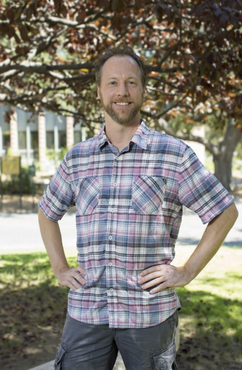 Adam Johnson conducts research in the field of asymmetric catalysis and organometallic coordination chemistry. His research group studies the conversion of straight chain organic molecules (aminoallenes) into nitrogen containing rings (pyrrolidines). These products and their synthesis are of potential interest for medical applications, as many pharmaceuticals have these nitrogen containing rings. Johnson has been at HMC since 1999 and has worked with more than 42 undergraduate students. In addition to his chemical research program, he has also published on pedagogy in inorganic chemistry and is co-founder and member of the Leadership Council for the Interactive Online Network of Inorganic Chemists and its website, VIPEr. In addition to teaching inorganic chemistry, Adam also teaches freshman writing and a new course on the chemistry of cooking.
Adam Johnson conducts research in the field of asymmetric catalysis and organometallic coordination chemistry. His research group studies the conversion of straight chain organic molecules (aminoallenes) into nitrogen containing rings (pyrrolidines). These products and their synthesis are of potential interest for medical applications, as many pharmaceuticals have these nitrogen containing rings. Johnson has been at HMC since 1999 and has worked with more than 42 undergraduate students. In addition to his chemical research program, he has also published on pedagogy in inorganic chemistry and is co-founder and member of the Leadership Council for the Interactive Online Network of Inorganic Chemists and its website, VIPEr. In addition to teaching inorganic chemistry, Adam also teaches freshman writing and a new course on the chemistry of cooking.
Chip Nataro, Lafayette College
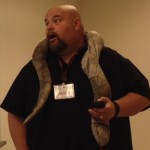 Chip Nataro has been at Lafayette since 1999 and has worked with 59 research students. He and his students perform research in organometallic chemistry with a particular fondness for bis(phosphino)ferrocene ligands. The group studies the electrochemistry, catalytic activity and coordination modes of these ligands. Nataro earned his PhD at Iowa State where he studied the protonation of M-M bonds. He went to the University of Vermont for his post doc where he split time learning about inorganic polymers and electrochemistry. Nataro teaches inorganic and general chemistry at Lafayette. He is a member of the leadership council of IONiC VIPEr, has participated in writing inorganic exams for the ACS exams institute and is a preceptor recipient of the ACS Division of Inorganic Chemistry Award for Undergraduate Research in 2013. He has also taught a first year seminar course on baseball and coaches the club baseball team at Lafayette.
Chip Nataro has been at Lafayette since 1999 and has worked with 59 research students. He and his students perform research in organometallic chemistry with a particular fondness for bis(phosphino)ferrocene ligands. The group studies the electrochemistry, catalytic activity and coordination modes of these ligands. Nataro earned his PhD at Iowa State where he studied the protonation of M-M bonds. He went to the University of Vermont for his post doc where he split time learning about inorganic polymers and electrochemistry. Nataro teaches inorganic and general chemistry at Lafayette. He is a member of the leadership council of IONiC VIPEr, has participated in writing inorganic exams for the ACS exams institute and is a preceptor recipient of the ACS Division of Inorganic Chemistry Award for Undergraduate Research in 2013. He has also taught a first year seminar course on baseball and coaches the club baseball team at Lafayette.
Jeff Raker, University of South Florida
Jeff Raker teaches organic chemistry at the University of South Florida and conducts chemical education research in the area of student learning across the chemistry curriculum and on the use of survey research methodologies to inform education practice. He did his undergraduate work in chemistry at Ohio Northern University, graduate work in college student development at Bowling Green State University, and Ph.D. in chemistry at Purdue University. Before joining the chemistry faculty at USF, he was a postdoctoral research associate with the ACS Examinations Institute. Jeff has been a member of the VIPEr community since Fall 2013 offering his expertise in assessment and evaluation. Along with evaluating the VIPEr Summer Workshops, Jeff has been assisting a group of inorganic chemists in characterizing the different types inorganic chemistry courses taught at the undergraduate level in the U.S. (see publications in the Journal of Chemical Education). On a lighter note, Jeff is a friend of the Mouse, living a short 80 miles from the Most Magical Place on Earth. Among his hobbies, Jeff designs and sews bow ties; he currently has over 50 bow ties in his collection with new bow ties being created weekly.
Barb Reisner, James Madison University
 Barb has been a member of the IONiC Leadership Council since 2007. She has been an active member of the ACS and has helped to start and administer the ACS Division of Inorganic Chemistry Undergraduate Award in Inorganic Chemistry, served on the DIC Executive Committee and worked with the Exams Institute. She is currently finishing up the new Foundations of Inorganic Chemistry Exam. As a professor at James Madison University, she has an active undergraduate research group that works on new - and hopefully porous - polyazolylborate hybrid frameworks. Barb also has interests in assessment and chemical education. In addition to teaching inorganic chemistry, Barb is a core member of the general chemistry staff and teaches Literature & Seminar - the course on literature research methods and communication in science. Barb enjoys spending time with her family, cooking, reading, and singing. She frequently sings with the Shenandoah Valley Bach Festival’s Chorus.
Barb has been a member of the IONiC Leadership Council since 2007. She has been an active member of the ACS and has helped to start and administer the ACS Division of Inorganic Chemistry Undergraduate Award in Inorganic Chemistry, served on the DIC Executive Committee and worked with the Exams Institute. She is currently finishing up the new Foundations of Inorganic Chemistry Exam. As a professor at James Madison University, she has an active undergraduate research group that works on new - and hopefully porous - polyazolylborate hybrid frameworks. Barb also has interests in assessment and chemical education. In addition to teaching inorganic chemistry, Barb is a core member of the general chemistry staff and teaches Literature & Seminar - the course on literature research methods and communication in science. Barb enjoys spending time with her family, cooking, reading, and singing. She frequently sings with the Shenandoah Valley Bach Festival’s Chorus.